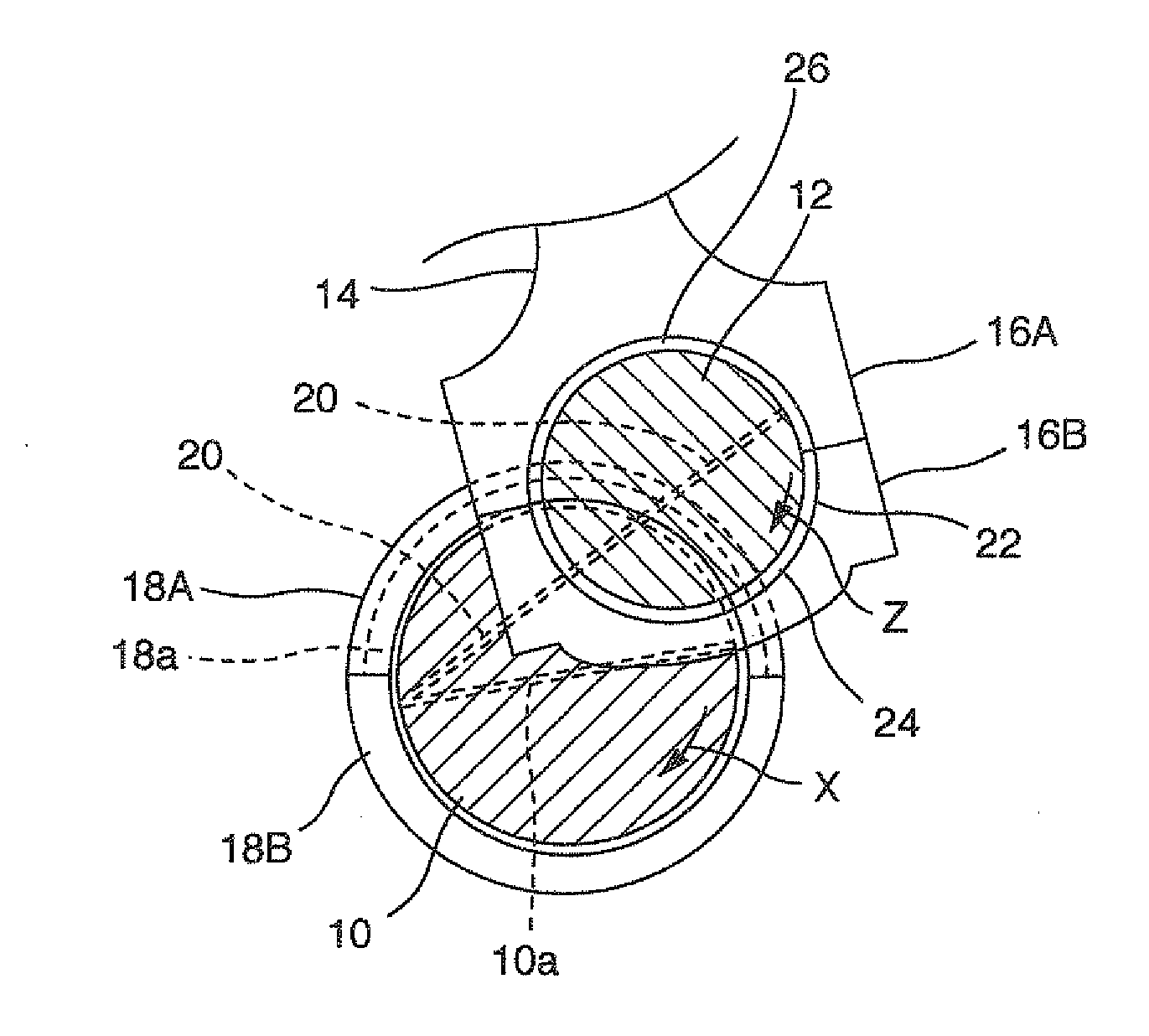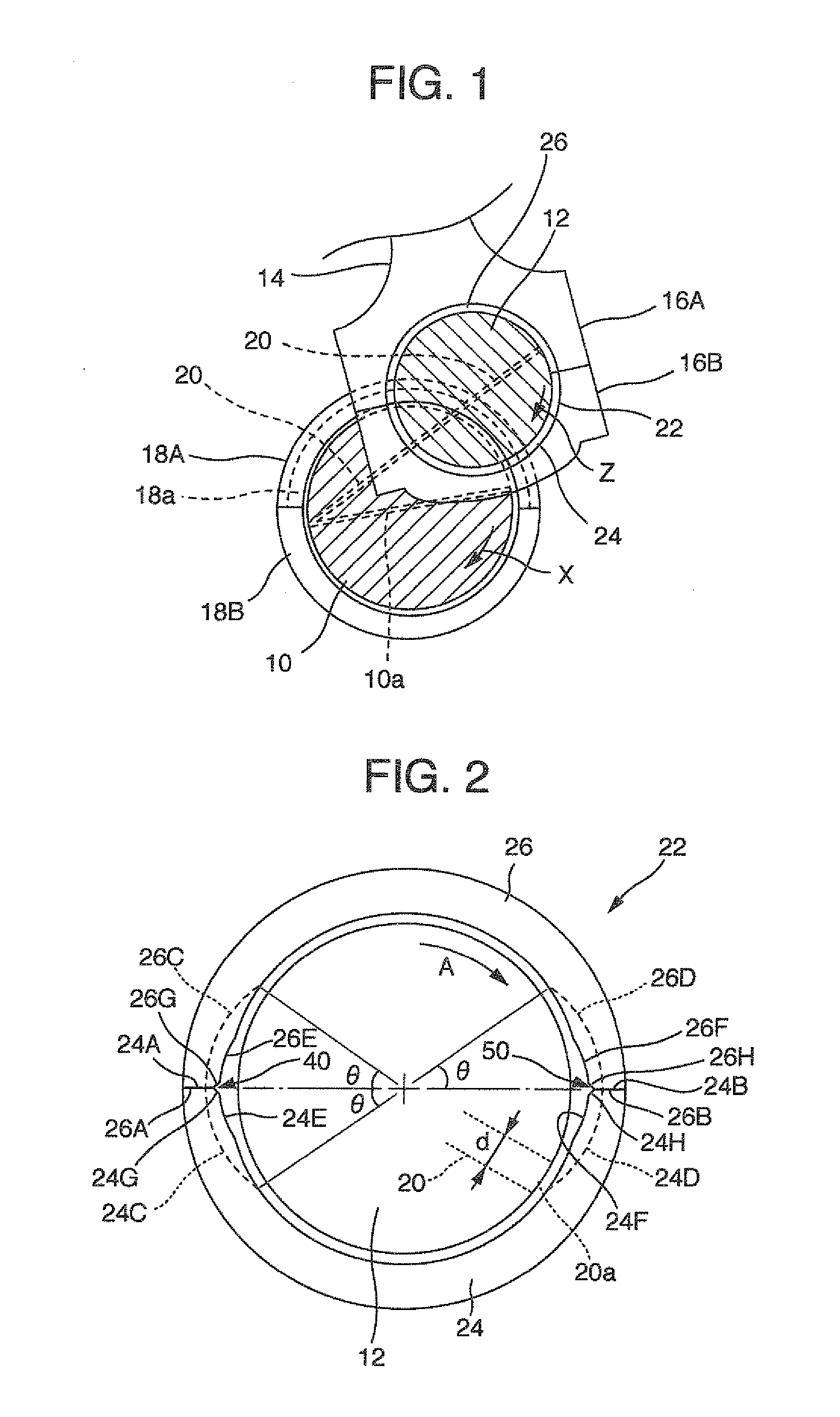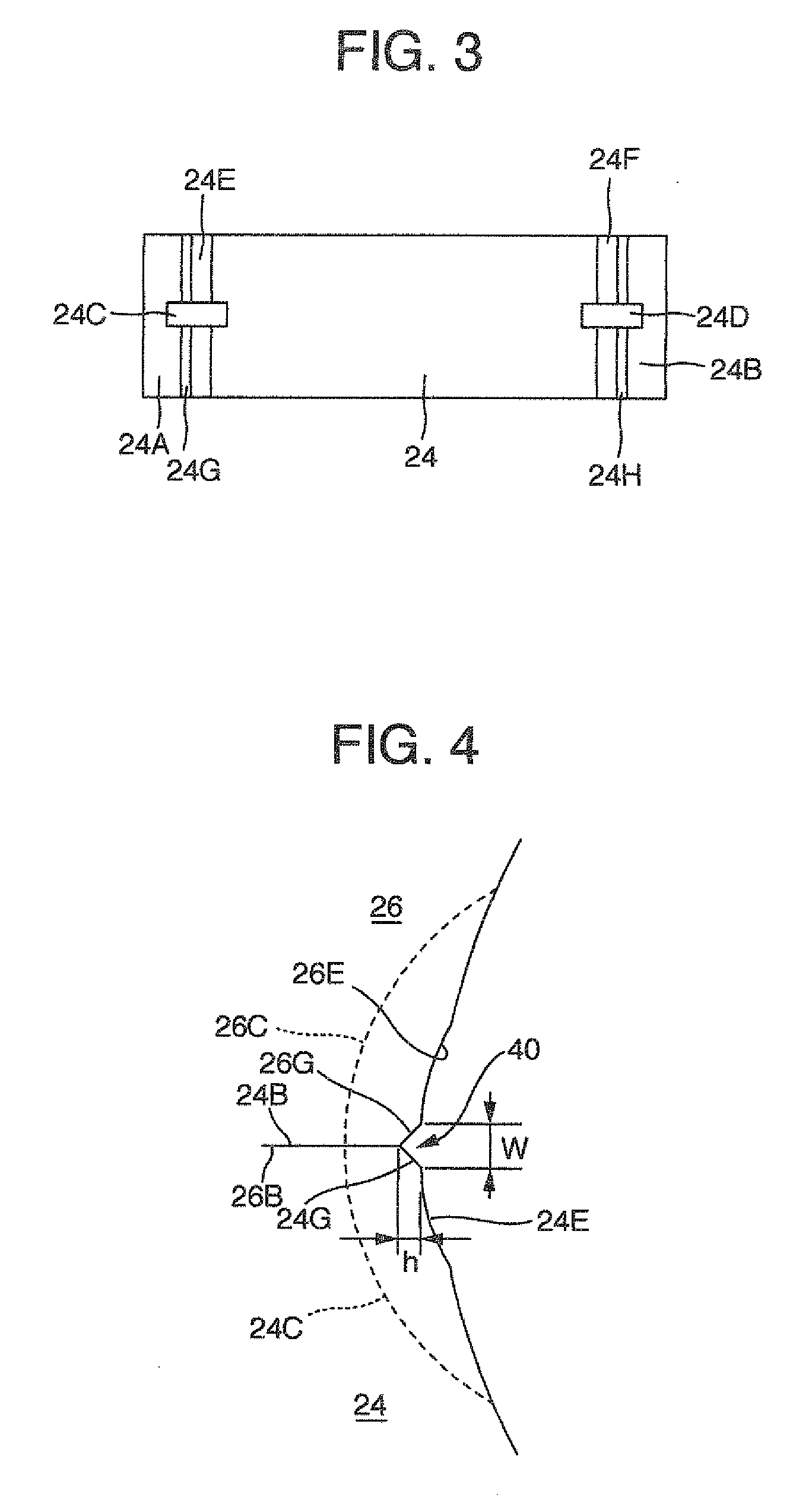Connecting rod bearing for internal combustion engines and connecting rod bearing device
a technology of connecting rod bearings and internal combustion engines, which is applied in the direction of bearings, shafts and bearings, rotary bearings, etc., can solve the problems of foreign substances damaging the sliding surface of the connecting rod bearing, damage to the bearing, and foreign substances discharge
- Summary
- Abstract
- Description
- Claims
- Application Information
AI Technical Summary
Benefits of technology
Problems solved by technology
Method used
Image
Examples
embodiment 1
[0071]FIGS. 2 to 4 show the semi-cylindrical bearings 24 and 26 constituting the connecting rod bearing 22 in detail. Since the semi-cylindrical bearings 24 and 26 have the same form as each other, the form of only one of the semi-cylindrical bearings will be explained.
[0072]The semi-cylindrical bearing 24 is of a symmetrical member in the drawing.
[0073]Circumferential Groove:
[0074]Circumferential grooves 24C and 24D for lubricant oil having a rectangular shape in cross section are formed on the inner surface of the semi-cylindrical bearing 24, which extend from circumferential ends 24A and 24B of the semi-cylindrical bearing 24 toward the circumferential center of the semi-cylindrical bearing 24. Width center lines of the circumferential grooves 24C and 24D are in alignment with the width center line of the semi-cylindrical bearing 24, and with the opening center of a lubricant-oil outlet port 20a (i.e. the outlet port of the lubricant-oil passage 20) existing on the surface of the...
embodiment 2
[0086]FIG. 7 illustrates a modification of the semi-cylindrical bearings 24 and 26. The modified semi-cylindrical bearings 34 and 36 are different from the semi-cylindrical bearings 24 and 26 in the shape of the circumferential groove. In circumferential grooves 34C and 36C of the semi-cylindrical bearings 34 and 36, the groove bottom surface has an arc shape in cross section. The groove width is made gradually smaller from each of the circumferential ends of the semi-cylindrical bearings 34 and 36 toward the circumferential center, and becomes smallest at the end on the circumferential center side. The groove width needs to be smaller than the diameter (d) of the lubricant-oil outlet port 20a of the crankpin 12 at a position away a distance equal to one-half (=d / 2) of the diameter (d) of the lubricant-oil outlet port 20a from the end. As the groove width of the circumferential groove is smaller, the velocity of the lubricant oil flowing in the backward direction (the arrow B) from ...
PUM
 Login to View More
Login to View More Abstract
Description
Claims
Application Information
 Login to View More
Login to View More - R&D
- Intellectual Property
- Life Sciences
- Materials
- Tech Scout
- Unparalleled Data Quality
- Higher Quality Content
- 60% Fewer Hallucinations
Browse by: Latest US Patents, China's latest patents, Technical Efficacy Thesaurus, Application Domain, Technology Topic, Popular Technical Reports.
© 2025 PatSnap. All rights reserved.Legal|Privacy policy|Modern Slavery Act Transparency Statement|Sitemap|About US| Contact US: help@patsnap.com



